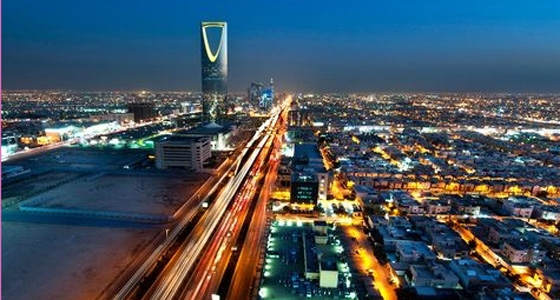The Saudi Central Department for Statistics and Information released new revised GDP figures for the last three years showing that the economy expanding by 4.7, 8.5 and 6.8 percent in 2010, 2011 and 2012, respectively. In light of these revisions, Jadwa Investment said in its report that Saudi Arabia’s economic growth to reach 4.2 percent in 2013.
Saudi Arabia is heading for another year of solid economic performance in 2013.
While large base effects play a role in reducing the economic growth this year, it is mainly the lower oil production compared to last year. In fact, the Kingdom has already started to scale down its oil production since reaching a peak of 10.1 mbpd in June 2012. Jadwa expects the annual oil production to fall by 2.3 percent year-on-year in 2013 compared with an expansion of 5.5 percent year on year last year. As a result, the oil sector is set to contract by 1.5 percent this year compared with an expansion of 5.5 percent in 2012.
The Jadwa report said nonoil sector will benefit from elevated government spending as well as corporate lending and solid domestic consumption. “We expect 2013 to be the fifth consecutive year that the economy is driven by expansionary fiscal policy. We forecast that the total government expenditure will be equivalent to 31 percent of GDP compared with an average of 30.4 percent in the last ten years,” Fahad Alturki, senior economist at Jadwa Investment, said.
High public sector expenditures particularly investment spending is psychologically important for the private sector. Nonoil private GDP growth is forecast at 6.3 percent compared with a 4.9 percent average for the last ten years.
The main economic risk is from the situation in the euro zone and fiscal uncertainty in the US. The fluid regional political situation will continue to make foreign investors wary and impact the sales of companies that export to the region; it also brings the risk of stock market and oil price volatility, the report said.
The impact of government spending across the sectors of the economy will depend on the nature of such spending. “While government investment spending is budgeted at a new all-time high, we expect an over spending that will take investment spending to 10.3 percent of GDP compared with 7.8 percent in the last ten years. This will maintain a solid performance by the private nonoil sector particularly construction activities. We expect the latter to maintain its position as one of the fastest growing sectors in 2013,” Alturki added.
According to Jadwa, construction companies and producers of associated goods and raw materials to benefit greatly from the government investment spending. The power and electricity and transport sectors are also likely to be directly affected by such spending.
Other sectors that make up the nonoil GDP will also benefit from the rising government consumption spending, the ongoing labor market reform initiatives and rising bank lending. The permanent fiscal measures that were introduced in 2011 such as the higher minimum public sector wages along with new minimum wage for the Saudization program are likely to maintain an elevated private consumption level. The wholesale and retail, financial and communication sectors will be the clear beneficiaries of these measures. For all these sectors, however, the large base effect is likely to reduce this year expansion compared to the level observed in the last few years.
Recent economic data highlight that the economy has maintained a robust performance in line with the recent GDP growth figures. Indicators of consumer spending, such as point of sales transactions and cash withdrawals from ATMs, point to healthy growth during the year.
Cement sales, a good gauge of construction activity, are 10 percent higher than they were in the same period of the previous year. Furthermore, the performance of listed companies continues to improve albeit at a slower pace than previous years, with profits up by 4 percent year-on-year in the third quarter, the report said.
Central bank data shows that bank lending rose consistently during 2012 with net credit issued reaching SR 125 billion, the highest level since 2008. In an environment of very low interest rates and low investment returns available elsewhere, banks are likely to put more emphasis on lending to smaller business that have struggled to access credit in recent years. Finally, the latest Purchasing Manager Index at 58 indicates that the private sector remains in an expansionary mood, the Jadwa report said.
Arab News
9 January
























































